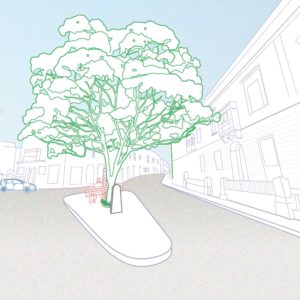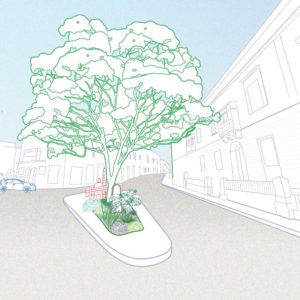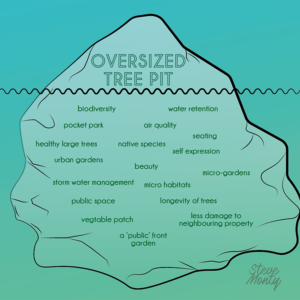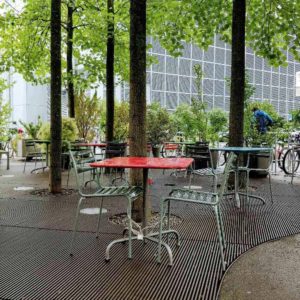Activities
An Ode to the Oversized Tree pit
Author: Steve Montebello, March 2022
Urban green areas bring nature and biodiversity into our cities. There are a myriad of positive benefits brought by the inclusion of nature in our cities, such as benefits to public health, improving air quality, improving mental health and form part of a stormwater control measure, to name but a few of them. To benefit from these positive effects, what tools are there in the designers’ toolbox to incorporate greenery into our urban landscape?
The design of soft-landscaping in our environment lies on a wide spectrum. At the lower end of the spectrum potted plants line the edge of a window, or maybe the stoop of a building entrance, and moving up the spectrum trees might sporadically line the edge of a street. At the higher end of the spectrum we find totally green spaces, such as botanical gardens and green parks. At the furthest end of this spectrum there are nature reserves and wild spaces. As the title suggests, this article presents a type of green urbanism somewhere in the middle of this spectrum, the over-sized treepit.
As with the design of our cities and urban landscapes, tree pits come in endless shapes, sizes, designs, and functions. The oversized treepit provides abundant space for the tree, providing more space for other species. I believe that with oversized tree-pits, the experience of the street changes, no longer is a tree inputted into the hard landscaping, but the over-sized tree pit is a micro-garden in the built environment, a natural acupuncture remedy to the grey built environment.
The proverbial tip of the iceberg, the oversized treepit may serve many more functions than meet the eye. Below the surface, it offers designers, residents and the general public a blank canvas to puncture the hard surface in our cities with expression, nature and beauty — the public’s front garden.The potential here lies in the extra square metre, or two, or three… of space for soil and soft landscaping. More than a micro dog park, or even a micro-corn field (see below), this additional space is a microhabitat in our cities.
Potential possibilities near me? and near you?
As I walk/cycle to get to work, or to go buy groceries, I always spot various potential locations for the inclusion of oversized tree pits – opportunities for this natural acupuncture. Replacing an on-street car parking space or two with an over sized tree-pit is a dream of mine. However other opportunities present themselves, where there already are large mature trees, just not an oversized tree pit.
One of these spaces is in Sliema, referred to as the Three Trees – unfortunately now with only one tree. Let us know if you can think of any other such spaces near you!
The “Three Trees traffic island in Sliema” as described in this brief article on the history of the area, mentions how “many years ago, two other ficus nitida trees accompanied the present one”.
Can the “traffic island” be glorified, through adding an oversized tree pit?
Tree pits in various places, of various sizes, uses and functions.
Generally when people travel to cities they usually take photos of the architectural wonders, maybe the narrow winding streets in old mediaeval cities or the latest forms of contemporary architecture. As an urban designer, I generally take photos of oversized tree pits – here is a brief collection of this album. (Images are taken by me, unless otherwise stated)









